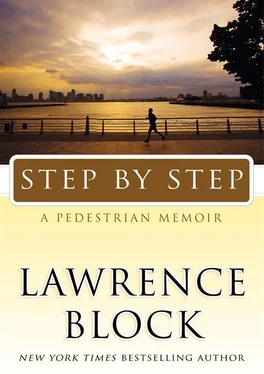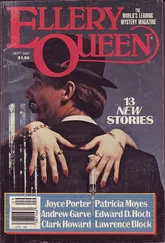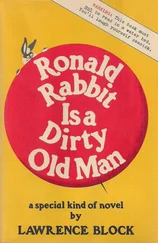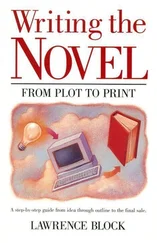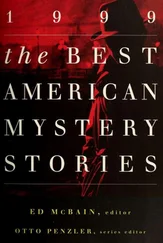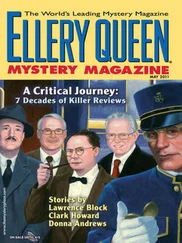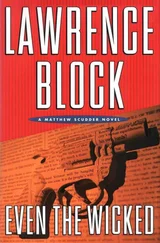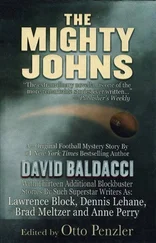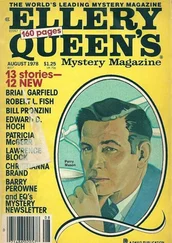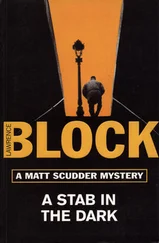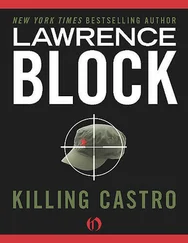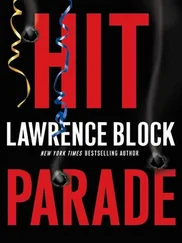Lawrence Block - Step by Step
Здесь есть возможность читать онлайн «Lawrence Block - Step by Step» весь текст электронной книги совершенно бесплатно (целиком полную версию без сокращений). В некоторых случаях можно слушать аудио, скачать через торрент в формате fb2 и присутствует краткое содержание. Год выпуска: 2009, ISBN: 2009, Издательство: William Morrow, Жанр: Биографии и Мемуары, Юмористические книги, на английском языке. Описание произведения, (предисловие) а так же отзывы посетителей доступны на портале библиотеки ЛибКат.
- Название:Step by Step
- Автор:
- Издательство:William Morrow
- Жанр:
- Год:2009
- ISBN:978-0-06-172181-6
- Рейтинг книги:3 / 5. Голосов: 1
-
Избранное:Добавить в избранное
- Отзывы:
-
Ваша оценка:
- 60
- 1
- 2
- 3
- 4
- 5
Step by Step: краткое содержание, описание и аннотация
Предлагаем к чтению аннотацию, описание, краткое содержание или предисловие (зависит от того, что написал сам автор книги «Step by Step»). Если вы не нашли необходимую информацию о книге — напишите в комментариях, мы постараемся отыскать её.
bestselling author comes a touching, insightful, and humorous memoir of an unlikely racewalker and world traveler.
Step by Step — читать онлайн бесплатно полную книгу (весь текст) целиком
Ниже представлен текст книги, разбитый по страницам. Система сохранения места последней прочитанной страницы, позволяет с удобством читать онлайн бесплатно книгу «Step by Step», без необходимости каждый раз заново искать на чём Вы остановились. Поставьте закладку, и сможете в любой момент перейти на страницу, на которой закончили чтение.
Интервал:
Закладка:
Why would anyone be masochist enough to take part in an ultramarathon? Why put in the interminable hours of training, only to punish oneself for still more hours over fifty or a hundred kilometers, or fifty or a hundred miles? Why trace endless circles around a lake for twenty-four hours?
(Or even longer. There’s another whole category called multiday races, and the meaning of the term is easier to make out than the motivation of the participants. Forty-eight-hour races, seventy-two-hour races. A six-day race in a park in Queens. A 3,100-mile race — yes, you read that correctly — also in Queens; a friend of Andy Cable’s participated one year, and Andy reported to me that although the winner had already crossed the finish line, his friend still had a little over five hundred miles to go. Think about that, will you? The race is over, the winner’s lying down with his shoes and socks off, and this chap’s still got to run from St. Louis to Kansas City and back again.)
Why subject one’s body and soul to this sort of thing? Ultramarathoners have tired of the question, but if you get one to respond he may tell you that the requisite discipline gives direction to his life, that pushing beyond his own barriers expands his sense of the possibilities, that the long hours on the course are a veritable spa session for his spirit. Flowery and/or cryptic explanations are commonplace; the loneliness of the ultrarunner does seem to put one in touch with one’s inner poet, one’s inner philosopher, one’s inner Hallmark card.
You need a reason? Here’s one. Complete one ultra and you can drop this three-word phrase into conversations for the rest of your life:
Just a marathon.
The wakefield race gave me a lift unlike anything else I can recall. I have never in my life had a greater sense of accomplishment. A friend gave me a look when I told him as much. I’d published all those books, he reminded me. I’d traveled all over the world. Those, it seemed to him, were real accomplishments, and I actually thought a night and a day walking around an unpronounceable lake somehow put them in the shade?
Well, yeah, and I think I know why. I had vastly exceeded my own expectations, had done considerably more than I believed I was capable of. I’d expected to cover marathon distance, intended to go fifty kilometers, dreamed of somehow covering fifty miles. But I never even entertained the fantasy of a hundred kilometers, and yet I’d somehow reached and passed that distance. I told him as much, but I’m not sure he got it.
But he was by no means the only person I told. You know the story about the elderly man in the confessional, reporting in vivid detail about his affair with a young woman a third his age? “Excuse me,” the priest says, interrupting, “but from the way you express yourself, it’s my impression that you are Jewish.”
“I am,” says the old man.
“Then why are you telling me this?”
“Father, I’m telling everybody !”
I too was telling everybody, partly out of pride, but as much out of a need to tell myself. Because my mind kept doing what it could to minimize the accomplishment. An inner voice kept telling me that I hadn’t really done what I thought, that I’d stopped to sleep, that I’d quit the course when I still had time for another lap, that I’d just gone through the motions. I had in fact gone through those motions for 63.2 miles, but the voice remained unimpressed. If I’d done it, how hard could it be? And what could it possibly amount to?
I came home from Wakefield with sore muscles and blistered feet, but nothing that didn’t mend in fairly short order. I eased back into training, and entered two half-marathons as a run-up to the marathon, one in Jersey City in September and another in Staten Island a week before the Niagara Falls race. The Staten Island race was just a long training run as far as I was concerned, my last before the marathon, and I took it at an easy pace.
After the marathon, Lynne and I hung around in Buffalo for my fiftieth reunion. I don’t suppose I hid the fact that I’d completed a marathon a week earlier. I might even have dropped the phrase just a marathon into a conversation or two. It wouldn’t surprise me.
My wakefield race report notwithstanding, I didn’t give serious thought to the November Ultracentric race in Texas. That same weekend, New York Road Runners was holding a 60K race in Central Park, and I decided to take a shot at that instead.
I showed up for it on a cold Sunday morning, and the crowd at the start provided a pretty good indication of the difference between ultramarathons and shorter races. The club holds races in the park all through the year, most of them ranging between four and ten miles, and there are always several thousand men and women who show up for the challenge and the T-shirt. Just three weeks before the 60K, some thirty thousand people had massed at Fort Wadsworth in Staten Island for the New York City Marathon, and they constituted the mere fraction who’d either qualified for the race or won the lottery; there’d have been well over a hundred thousand runners if they’d been able to accept all applicants.
There were perhaps fifty hardy souls gathered at Fifth Avenue and Ninetieth Street for the start of the Knickerbocker 60K.
Isn’t that remarkable?
Granted, the New York Marathon has a lot going for it. It’s an important race with an international reputation, held on a scenic course that traverses the five boroughs and draws enthusiastic spectators throughout its route. The Knickerbocker, in contrast, consists of nine four-mile loops of the Central Park course, plus a brief out-and-back at the start to make up the 37.2-mile distance. There was no press coverage, no TV cameras at the start, no crowd support, no band playing. A drink table at the start and another halfway around the loop provided water, Gatorade, and the ultrarunner’s favorite, flat Coke.
You didn’t even get a T-shirt.
Still, wouldn’t you think that a few of the tens of thousands denied entry to the marathon would have chosen to run eleven miles farther for a tenth the entry fee?
For me, the Knickerbocker was more of a challenge than I would have preferred, because time was a factor. The crew would cease manning the finish line after eight and a half hours, and if you took longer than that, you wouldn’t get your time officially recorded. It’s a little difficult in retrospect to figure out why this mattered to me, but it did at the time, and I was determined to get in under the wire.
Now that’s not a terribly stringent time limit for a runner. If you’re in shape to run the distance, you can certainly do so in the allotted time. For a walker, and a geriatric one in the bargain, covering that many miles at a 13:30 clip takes some effort. My pace had been faster in all the year’s previous races, and was 13:10 at Niagara Falls, but this race was almost half again as long, and the colder weather meant more clothes, which ate up time whenever I stopped to pee.
The result was that I had to push myself more than I would have liked. The most pleasant part of a long race is the time spent at cruising speed, when you can just relax and go with the flow. I couldn’t allow myself to do that, I had to walk at the leading edge of my comfort zone, and that took the joy out of it. But I crossed the line at 8:21:50 — and, remarkably, there were a few souls who took even longer than I did.
A week later I was back on that same park loop for a four-mile race. That wrapped up 2005, and my records indicate I took part in twenty-five races, with a total distance of 277.2 miles. On the second Sunday in January I returned to the park for the Fred Lebow Memorial five-mile race, the same race that I’d started off walking a year earlier. Then my time had been 1:00:21; now I was able to cut that by almost three minutes, to 57:36. And a week later I flew to Mobile, Alabama, for what promised to be an interesting race... even though it was, after all, just a marathon.
Читать дальшеИнтервал:
Закладка:
Похожие книги на «Step by Step»
Представляем Вашему вниманию похожие книги на «Step by Step» списком для выбора. Мы отобрали схожую по названию и смыслу литературу в надежде предоставить читателям больше вариантов отыскать новые, интересные, ещё непрочитанные произведения.
Обсуждение, отзывы о книге «Step by Step» и просто собственные мнения читателей. Оставьте ваши комментарии, напишите, что Вы думаете о произведении, его смысле или главных героях. Укажите что конкретно понравилось, а что нет, и почему Вы так считаете.
